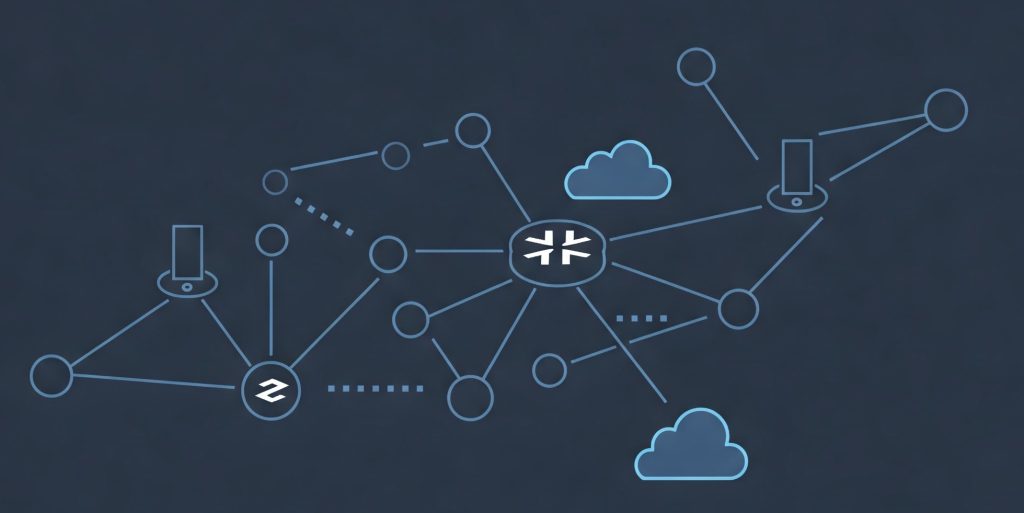In today’s data-driven world, network capacity planning isn’t just a “nice-to-have,” it’s a necessity. Overprovisioning leads to wasted resources, while underprovisioning results in performance bottlenecks and frustrated users. So, how can you accurately predict future network demands? Enter NetFlow, your invaluable tool for insightful network capacity planning.

Understanding NetFlow’s Power:
NetFlow, and its variants like sFlow and IPFIX, provides detailed information about network traffic. It captures data on who is communicating with whom, what applications are being used, and how much bandwidth is being consumed. This granular visibility goes far beyond simple SNMP metrics, offering a comprehensive picture of your network’s behavior.
Why NetFlow is Essential for Capacity Planning:
- Traffic Trend Analysis: NetFlow allows you to analyze historical traffic patterns, identifying peak usage times, growth trends, and seasonal fluctuations. This data is crucial for predicting future bandwidth requirements. For example, you might discover that video conferencing traffic spikes during specific hours or that data backups significantly impact bandwidth during certain nights.
- Application Bandwidth Usage: NetFlow reveals which applications consume the most bandwidth. This helps you prioritize critical applications and identify potential bottlenecks. For instance, you might find that a cloud-based backup service is consuming excessive bandwidth, impacting the performance of business-critical applications.
- Identifying Bandwidth Hogs: NetFlow pinpoints users or devices consuming excessive bandwidth. This enables you to investigate potential issues, such as malware infections or unauthorized file sharing. You can then take corrective actions, such as implementing traffic shaping or restricting access to certain applications.
- Forecasting Future Needs: By analyzing historical NetFlow data, you can forecast future bandwidth requirements based on growth trends and anticipated changes. This allows you to proactively upgrade your network infrastructure before performance issues arise. For example, if you see a consistent 20% annual increase in video conferencing traffic, you can plan for future bandwidth upgrades accordingly.
- Validating Network Upgrades: After implementing network upgrades, NetFlow helps you validate their effectiveness. You can compare pre- and post-upgrade traffic patterns to ensure that the upgrades have addressed the identified capacity issues.
- Optimizing WAN Links: NetFlow provides insights into WAN link utilization, allowing you to optimize traffic routing and reduce latency. You can identify underutilized or overutilized WAN links and make adjustments to improve overall network performance.
- Planning for Cloud Migration: As businesses increasingly migrate to the cloud, NetFlow helps you assess the impact of cloud traffic on your network. You can identify the bandwidth requirements of cloud-based applications and ensure that your network can handle the increased traffic load.
- Security Considerations: NetFlow can also be used for security purposes, as anomalous traffic patterns can indicate potential security threats. While capacity planning is the primary focus, it is important to note the dual use case.
Implementing NetFlow for Capacity Planning: Beyond Basic Collection
To effectively leverage NetFlow for capacity planning, you need more than just a collector. While basic collectors are essential for gathering flow data, advanced processing tools can significantly enhance your analysis and integration with existing IT operations systems.
Here’s how to implement NetFlow for capacity planning, with a focus on maximizing its potential:
- Enable NetFlow on Your Network Devices: As before, ensure NetFlow (or sFlow, IPFIX) is enabled on your routers and switches, configured to export flow data.
- Deploy a Robust NetFlow Processing Solution: Instead of relying solely on a basic collector, consider deploying a comprehensive NetFlow processing tool like a NetFlow Optimizer. These tools provide advanced capabilities that are crucial for effective capacity planning.
- Volume Reduction: One of the key challenges with NetFlow is the sheer volume of data it generates. Tools like NetFlow Optimizer can reduce this volume by up to 90% through intelligent aggregation and filtering. This significantly reduces storage requirements and improves analysis performance.
- Data Enrichment: Beyond simple collection, advanced tools enrich flow data with valuable context. This can include geolocation information, application identification, and even user identity, providing a more complete picture of network traffic.
- Integrate with IT Operations Systems: Seamless integration with IT operations systems like Splunk is essential for deriving actionable insights. NetFlow processing tools can forward enriched and reduced flow data directly to these platforms. This allows you to correlate network traffic with other operational data, such as server logs and application performance metrics, for a holistic view of your IT environment.
- Analyze Enriched and Reduced NetFlow Data: Use the reporting and analysis tools within your NetFlow processing solution or your IT operations platform to identify traffic patterns, bandwidth usage, and potential bottlenecks. The enriched data will provide deeper insights into application usage and user behavior.
- Create Detailed Capacity Planning Reports: Generate comprehensive reports that summarize your findings and provide clear recommendations for future network upgrades. Include visualizations of traffic trends, application usage, and bandwidth consumption to effectively communicate your findings to stakeholders.
- Regularly Review and Update Your Capacity Plan: Network traffic patterns are dynamic and constantly evolving. Regularly review and update your capacity plan based on the latest NetFlow data and insights from your IT operations systems. This ensures that your network infrastructure remains aligned with your business needs.
By leveraging advanced NetFlow processing tools and integrating with your IT operations ecosystem, you can transform raw flow data into actionable intelligence for effective network capacity planning.
The Bottom Line:
NetFlow is an indispensable tool for network capacity planning. By leveraging its detailed traffic insights, you can accurately predict future bandwidth requirements, optimize network performance, and avoid costly downtime. In a world where network reliability is paramount, NetFlow provides the data-driven foundation for building a robust and scalable network infrastructure.
